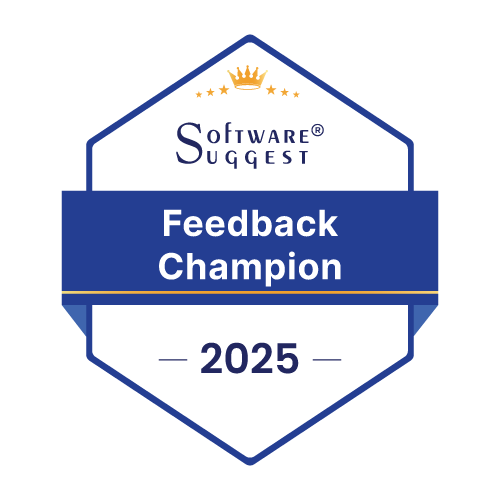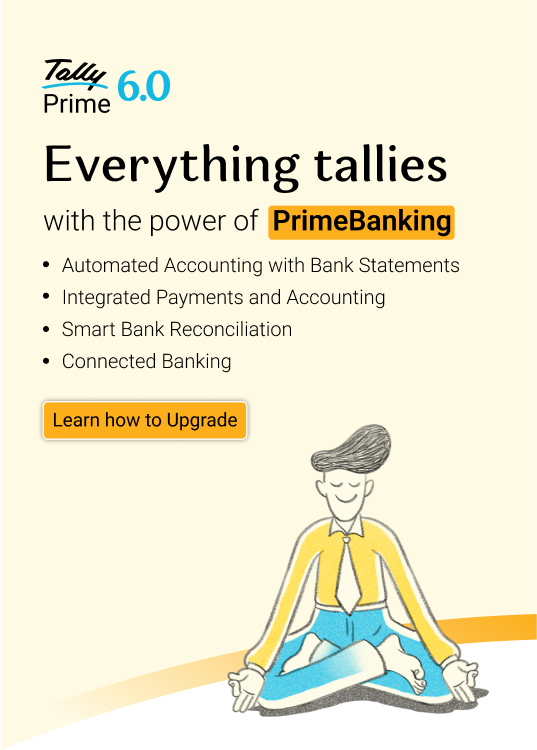At Tally, VoC is a mindset. We engage deeply with real users to shape better product decisions through honest, diverse, and meaningful conversations. This keeps our solutions truly relevant and user-first.
Our approach to Voice of Customer (VoC) stands apart, rather than relying solely on direct surveys or isolated touchpoints, we engage with a well-connected network of stakeholders — including partners, customers, influencers, and ecosystem contributors. This extended chain not only enables us to gather feedback at scale, but it also ensures that every insight is validated through multiple lenses. As a result, the feedback we collect is richer, more insightful, and more actionable, enabling us to take sharper, more informed actions that align closely with real user’s needs.
Irrespective of the product stage, we start by clearly defining our objective. We place strong emphasis on diversity — not just in user profiles, but also in use cases, environments, and perspectives. Our aim is always to go deep, bring clarity and direction to every product decision we make.
VoC as a mindset
At Tally, we believe that VoC is not just a process — it’s a mindset that shapes how we listen, observe, and act on customer experiences. To ensure we derive meaningful and authentic insights, we follow these foundational principles:
- Customer-led interactions, not product-led conversations
VoC sessions are not product demos. Our goal is to understand how customers think, behave, and interact in their natural environment — not to explain how our product works. We avoid positioning ourselves as instructors or guides during these sessions.
- VoC is about shadowing, not selling
We treat every session as an opportunity to shadow the customer’s reality, not to showcase ours. This means stepping into their shoes and seeing the world through their lens — what confuses them, what excites them, and what they truly need — without trying to direct the experience.
- Holistic coverage and diversity
We actively ensure that our VoC efforts span different geographies, business sizes, user roles, and environments. If we notice a lack of representation in any segment or use case, we course-correct by bringing in voices from those gaps.
- Selecting the right customers and defining clear personas
We ensure the participants represent key user personas, diverse use cases, and varied business contexts. A good mix helps surface both edge cases and common pain points. Without persona clarity, the feedback risks becoming too generic or biased.
- VoC is not compliance
We don’t treat VoC as a compliance item. It’s not about checking a box before a release. It's about building with empathy and clarity. Every session should leave us better informed and more aligned with our users.
- Frequency and consistency
VoC is not a one-off activity — it’s a continuous feedback loop. Regular interactions with customers help us spot evolving needs, behavioural shifts, and long-term adoption patterns. A cadence-driven approach helps create a rhythm of learning, refinement, and validation.
- Read between the lines: Non-verbal cues matter
Sometimes, what users don’t say is just as important as what they do. We observe for signs of confusion, hesitation, frustration, or deviation from expected paths. These cues often reveal underlying usability issues or cognitive gaps that might not be vocalized directly.
- Document everything: Record, observe, annotate
During sessions, we ensure recordings are taken (with consent), and detailed notes are captured post discussions. This includes quotes, observed behaviours, and moments of hesitation or deviation.
- Taking over the session
Taking control or showcasing the product during a VoC session shifts the dynamic. Users begin to see us as experts, and their behaviour becomes influenced rather than authentic. We resist the urge to intervene — even if it means letting the user struggle — because those moments often uncover the most powerful insights.
Ownership and empathy from product managers
We recommend that Product Managers take end-to-end ownership of the Voice of Customer (VoC) process. This involves not only driving outcomes but also adapting to the customer’s context — whether that means aligning with peak business hours, a Chartered Accountant’s schedule, or an SME owner’s limited availability. Flexibility and respect for their time foster trust and lead to more meaningful, high-quality interactions.
We go to the extent of allocating dedicated time and buffer for the VoC process — not just for conducting interactions, but also for deeply consuming, synthesizing, and acting on the feedback. This window is treated as essential, and we remain flexible to extend it if the insights demand significant course corrections or product changes. Our goal is to ensure that feedback isn't just heard, but meaningfully integrated. A notable example is the release of ERP 4.5, where the launch was intentionally delayed due to misalignment with key VoC insights — reinforcing our commitment to getting it right for our users.
Courage to pivot
We believe in having the courage and capacity to pivot when necessary. If VoC reveals that customers are not satisfied, we should be willing to drop the current design and start afresh — no matter how far along we are. VoC should sit at the top of our decision-making hierarchy, guiding not just what we build, but how and why we build it. Prioritizing VoC ensures that our solutions remain truly relevant and valuable to those who use them.
“VoC should not be reverse-engineered from a deadline—it requires time, intent, and authentic engagement to surface meaningful insights”
-Rajagopal R
Principal Product Manager
Tally Solutions
Tally’s VoC techniques
|
Tally’s VoC techniques blend structured methods with human connection—ranging from interviews to immersive field visits. We gather insights not just from users, but also from partners and experts who shape real-world usage. This multi-dimensional approach ensures our products are built on trust, depth, and insightful clarity. |
At Tally, we use multiple ways to gather VoC feedback:
- Customer interviews: One-on-one discussions to uncover deep insights into user behaviour and expectations.
- Online surveys: Well-crafted surveys to measure satisfaction and areas for improvement.
- Live chat: Real-time interactions that provide instant user sentiments and feedback.
- Recorded call data: Analysing past conversations to identify recurring themes and concerns.
- Focus groups: Engaging a small set of users in structured discussions to refine product strategies.
- Dedicated feedback forms: Allowing users to submit feedback at their convenience ensures continuous data collection.
- Usability testing: Observing real-world product interactions to identify usability challenges and areas of friction.
Power of in-person interactions
Above all, we strongly advocate meeting our users in person. These face-to-face interactions allow us to build genuine trust and long-term relationships, which are foundational for meaningful feedback. Observing users in their natural environment reveals unspoken pain points, behavioural patterns, and context that surveys or remote calls often miss. It enables us to pick up on subtle cues—what they struggle with, what delights them, and what they may not articulate explicitly. This deeper understanding helps us design solutions that truly resonate.
“Relationship building is essential for VoC as it fosters trust, encourages openness, and leads to richer, more authentic insights”
-Sarala R
Group Product Manager
Tally Solutions
Insights from partner and power-users
In addition to direct customer conversations, we place significant emphasis on gathering feedback from our partners. These partners often serve as the first point of contact for customer queries and challenges, giving them a front-row view into evolving expectations, recurring issues, and emerging needs. Their inputs are invaluable, not only in validating our understanding but also in surfacing learnings we might otherwise overlook. These observations are gathered both through routine engagements and structured feedback sessions, ensuring a continuous pulse on the ground.
We also invest in focused interactions with our key influencers, such as Chartered Accountants, implementation experts, and other power users who have deep, hands-on exposure to the product in diverse business contexts. These users bring a rich perspective—often bridging functional expertise with real-world usage—which helps us uncover edge cases, usability friction, and opportunities for deeper value creation. By synthesizing insights from both users and their enablers, we ensure that our product roadmap is informed by a 360° view of the customer ecosystem, leading to more grounded and impactful product decisions.
“Leverage the front-facing teams feedback as they are closest to the customer pulse and first-hand experiences”
-Sarala R
Group Product Manager
Tally Solutions
From themes to insight saturation
The more customer interactions one has, the richer and more nuanced the understanding becomes—not just of what users articulate, but of what they truly need and experience. Engaging with a wide variety of customers helps surface recurring themes, challenges, and expectations across different user segments. As these interactions increase, a point is reached where feedback starts to repeat—highlighting common patterns and sentiments. This marks insight saturation, indicating that one has captured a comprehensive and representative range of perspectives.
Reaching this stage is a strong validation that the exploration has been thorough. It signals readiness to move forward with clarity, using insights that are both diverse and well-formed. However, it's important to remember that meaningful feedback often lies not just in words, but in behaviours and unspoken cues—something only consistent and attentive engagement can reveal.
Feedback to strategy - A checkpoint
Moreover, when feedback is repeatedly validated across environments, roles, and business contexts, it reduces the risk of blind spots and improves the likelihood of broad adoption. This disciplined, customer-immersive approach is what transforms feedback into strategy—and strategy into products that truly resonate. At Tally, we treat this phase not as an end, but as a checkpoint in our continuous dialogue with users.
At Tally, Voice of Customer is not just a process but a mindset that drives every product decision.
By engaging deeply and consistently with a diverse network of users, partners, and influencers, we gather rich, multi-faceted insights that reflect real-world needs and contexts. Our approach emphasizes observing users in their natural environments, focusing on their behaviour and challenges without steering their experience, ensuring feedback is genuine and rooted in actual usage rather than assumptions.
VoC is a continuous journey that helps us identify evolving user needs and make course corrections, whenever necessary, even if it means pivoting designs or adjusting release timelines. By embedding VoC deeply into our decision-making, we transform customer feedback into impactful solutions that truly resonate, delivering lasting value and staying aligned with the evolving expectations of our users.

















